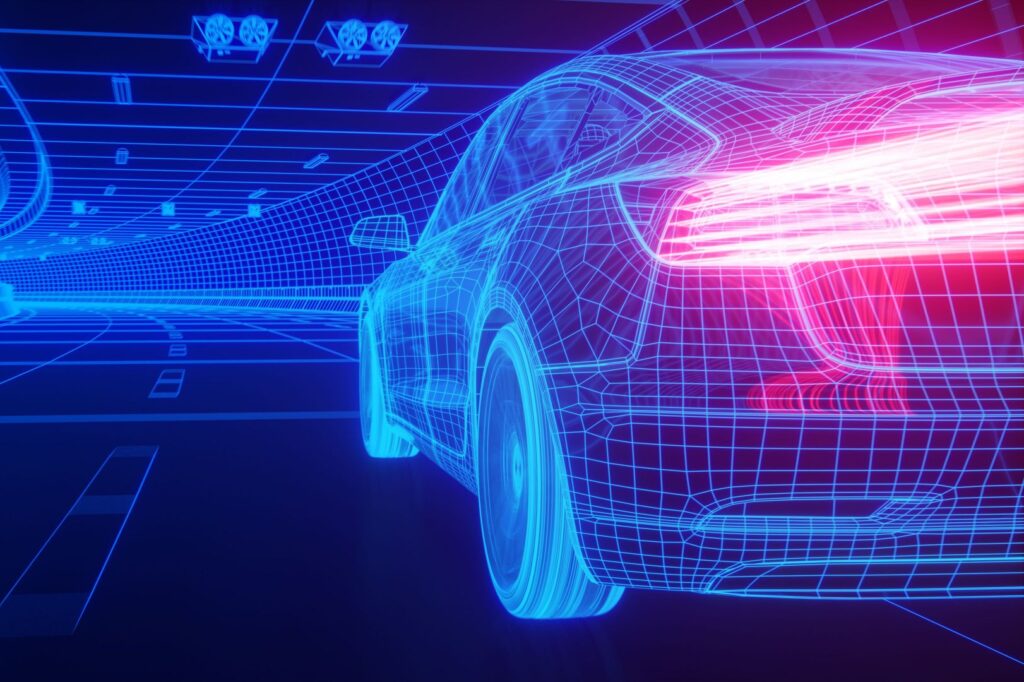
There can be very few industries that are currently going through such a disruptive period as that currently playing out in the automotive sector. Never before in its more than 160-year history could a perfect storm of factors have had such a significant effect in such a relatively short amount of time.
A convergence of technologies, the falling cost of cell batteries and grave concerns over the environmental impact of the combustion engine have set the automotive industry on a path to electrification. The move towards electric vehicles (EVs) has seen some of the biggest car manufacturers in the world collaborate on next-generation vehicles, with investments totalling hundreds of millions of dollars.
Roger Atkins is a man who knows all about EVs and the metamorphosis taking place in the automotive arena. Having by his own admission spent a couple of decades singing the praises of combustion engines, he changed tact around 15 years ago and is now intimately engaged in all things electric.
His evangelisation of EVs has seen Atkins become one of the best-connected experts on LinkedIn, with almost 288,000 followers keen to get his take on the latest developments, while he personally knows practically all of the key players on the EV scene, and is on first name terms with the likes of Elon Musk and Richard Branson.
Central to his role as an EV advocate is Electric Vehicles Outlook, which he established four years ago, while he also acts as an advisor and brand ambassador for other organisations, events and businesses such as the Geneva Motor Show, Rimac Supercars, Energy Disruptors and ZeroAvia, which is attempting to build the world’s first zero-emission aviation powertrain.
“I have an outlook on EVs borne out of the 15 years I’ve spent in and around the industry,” Atkins tells Digital Bulletin. “I actually started off working on hybrid taxis with London Taxis, and then joined a startup called Modec, which was very innovative and potentially really successful for a time until it ultimately failed for a number of reasons, with the financial crisis that began in 2008 being the really obvious one.”
From there, Atkins joined Ricardo and was charged with heading up its development of EVs, which he credits with giving him “an education” in better understanding engineering capability and the technology and science around the automotive industry in general. That knowledge allowed Atkins to set out on his own journey five years ago and begin building a narrative and audience around EVs.
As that audience has grown, so has the number of companies in the EV space who want to benefit from Atkins’ knowledge. One of the the companies he works with is Momentum Dynamics, where he is Member of the Board of Advisors. Momentum’s goal is to develop commercially viable, high-power automatic wireless charging systems for the automotive and transportation industries.
“I have a vested interest, so people can take my thoughts and say: ‘well you would say that wouldn’t you’, but I really believe that wireless charging should come to the fore,” he comments. “I’m a believer in wireless technology and I have been for 10 years. I spoke to Elon Musk six years ago about this, about the battery swapping and wireless charging and what we thought would ultimately prevail.
“I’ve become a lot more informed about it since then and it has a place and an opportunity, and is part of a wider conversation we need to have about the future and how we can future-proof the infrastructure around EVs.”
There have been forays from the likes of Tesla and Volva into hybrid or electric fleet vehicles in recent years, but the commercial market is and remains a niche one compared with the private vehicles space, where practically every large scale automotive business has a vested interest and large-scale budgets.
Atkins says that such an approach is “perfectly logical and rational” but adds: “To some extent, I think we’ve made a big mistake.
“Take Tesla as an example. They’ve been a major player in this, they started with expensive cars in small numbers and have used those customers to fund the next level of vehicles and have slowly trickled down to the mass market. But that doesn’t address one of the principle challenges, which is the need to clean up the air quality of our cities.
“But it is the vans, trucks, taxis and buses that create most of the pollution. They are predominantly diesel – especially in Europe – and are run all over the world with combustion engines. In fact, they should have been the first vehicles to be switched because they are typically urban operating, defined mileage and ‘back-to-base’, which all fit more neatly into the current state of EVs and have done for many years.
“So, we’re in a bit of a pickle, but what we shouldn’t do is slow down the progress with EVs, but instead massively accelerate the adoption of electric taxis, buses and vans.”

Atkins believes that the influences and driving forces around change within the automotive space need to be “carefully considered”, and he quotes the World War Two motivational slogan ‘Keep Calm and Carry On’ to encourage the community to keep on course with its progress, although he cites a few key challenges.
“Legislation is a key driver because it creates a level playing field, whether it’s European legislation, or in Asia, or North America, or something that’s a global feature. That all helps people have a level playing field and helps manufacturers develop and design and bring to market at scale the automotive solution. That’s worked pretty well for some time, but that’s fragmenting very much,” he says.
“The reality is that authorities and Mayors of cities like London and Paris and New York are having quite an impact on what can and can’t work in a city. This makes it very difficult for national and international policy and cuts across where we’ve got to so far.”
While China is the number one emitter of carbon in the world, it is also leading the EV revolution, leveraging its rich history as an electronics manufacturer. Its government has thrown its weight behind EVs, making the industry one of the 10 pillars of Made in China 2025, a state-led plan for the country to become a global leader in cutting edge technologies.
And such is the country’s enthusiasm for EVs, more than 500 Chinese EV companies have been formed since 2013 to hit the country’s targets and benefit from state subsidies, according to a report from the Technology Review.
“China is the driving force around EVs because it has less of a legacy with the internal combustion engine and also has a different social structure. It is rapidly adopted city dwelling, city living and working, even faster and quicker, on a much bigger scale than the rest of the world. Therefore, they focused on what they call new energy vehicles. So, they’re focused very much on clean air technology within vehicles that operate in those cities,” says Atkins.
“The Chinese government has seen both a national need to address that, but they’ve also seen a commercial opportunity, which they’ve embedded in policy with Made in China 2025. It wants to lead the world in bringing EVs to the market.”
As well as the march towards electrification, Atkins recognises a concurrent paradigm shift in the form of autonomous vehicles that could fundamentally change the conversation around car ownership, and could potentially see a vehicle being utilised 90% of the time, as opposed to the reality currently, where most vehicles sit idle for the vast majority of the time.
“That would have a big impact on how a vehicle operates, its components and life cycle, it would really flip everything on its head. Automotive companies would have to redesign their business model or risk going out of business. No company has a guaranteed ticket to the future, they have to be prepared to bend and adapt,” he concludes.
“The key, imperative now is to change and it’s not just about wanting to change anymore, we have to. One of the great things about human beings is that when our backs are against the wall, we can come together and achieve extraordinary things.”



